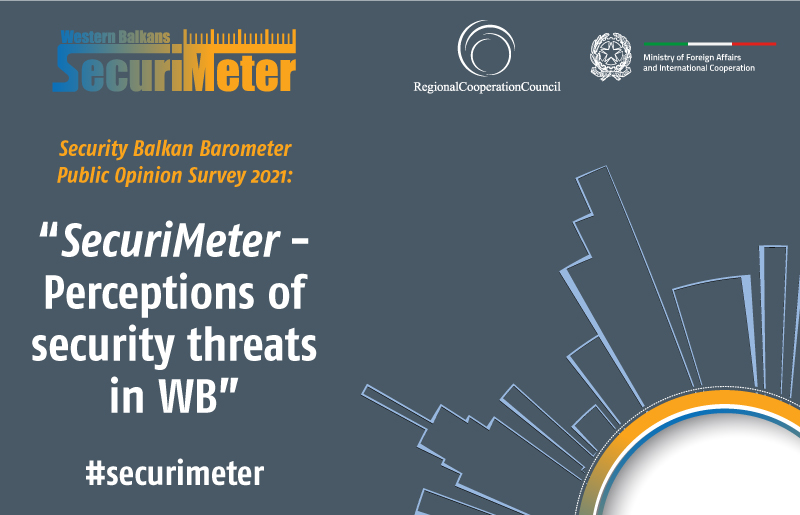- Home/
- News
Ireland: Radicalized Youth and the Case Of Limerick City
The radicalization of youth is occurring unabated in urban centers throughout Ireland, but it has precious little to do with political or religious ideals. Instead, it is driven by the growth of gang culture and underpinned by social deprivation. What exactly precipitates this societal transformation and spurs individuals into making such drastic life choices is open to a spectrum of interpretations.
Recently, researchers at University College London (UCL), part of an international team, have succeeded in providing fresh insight into the phenomenon of radicalization by using neuroimaging techniques, both to map the brain responses of radicalized young Muslim men in Barcelona and monitor how they respond to being socially marginalized. Notably, they found that “extreme pro-group behavior seems to intensify after social exclusion,” and that “radicalization follows a sense of isolation from society”.[1]
Although “the concept of radicalization is by no means as solid and clear as many seem to take for granted,” the term typically hinges on the process of adopting an extremist belief system and developing a willingness to use, support, or facilitate violence as a method to effect societal change.[2] There is more to the concept, however, than the working definition of “socialization to extremism which manifests itself in terror” or jihadism, and the UCL research provides a new platform from which to observe radicalization in societal strata that are not necessarily given to militancy and religious conflict, such as Limerick’s deprived areas.
According to Dr. Robert F. Hesketh, Criminal Justice Lecturer at Liverpool John Moores University, “The word radicalization has been hijacked by the war on terror and become interchangeable with extremism. But radicalization is happening in our towns and cities every day as marginalized teenagers and children — left isolated from opportunity — join street gangs”.[3]
Hesketh argues that the tendency of the media to tie radicalization to religio-political fundamentalism has resulted in overlooking gang culture and the recruitment process of new members as radicalization within our communities. He asserts that social inequality and deprivation motivate new recruits to deviate from mainstream society, as they perceive a lack of real opportunity to have any meaningful agency over their own lives.[4]
In Ireland, the registered charity Social Justice Ireland reports that 1 in 5 children (under 16 years of age) live below the poverty line, which means a considerable portion of the population resides outside the margins of mainstream society.[5] These figures only escalate upwards on entering the numerous socially disadvantaged areas around the country. Of the 79 blackspots identified nationwide, Limerick City historically is responsible for almost a quarter of them, and the city holds eight of the top ten places. Where a blackspot is typically classified by unemployment rates in excess of 27%, these parts of Limerick show unemployment rates above 35% [6].
By contrast, as of May 2019, the unemployment rate nationally in Ireland is lower than 5%, which at face value would suggest a resurgent employment market on the back of a decade of enforced austerity due to the economic crash of 2008.[7] However, it is much more likely an indicator of a deepening social stratification within Irish society and an exacerbation of social exclusion, nowhere more keenly felt than in those blackspots, with Limerick worst hit. Where society abandons children and teens, gangs can step in and groom individuals for criminal acts.
This is just what Professor Sean Redmond, a data analyst with the Department of Children, found when he conducted a study at the University of Limerick. In a report published in 2017, Lifting the Lid on Greentown, a fictional name to protect the community, he and his research team showed that “criminal networks play a significant role in encouraging and compelling children to engage in criminal behavior”.[8] Over the course of four years, Redmond’s study learnt of how gangs systemically exploit children as young as 11 years of age with alcohol, drugs, and the pitch of gaining status within their communities.
Redmond concluded that these gangs plague communities across Ireland and continue to do so, committing burglaries, robberies, and drug offences. Such social isolation from mainstream society is now regarded as a primary driver behind youth crime. Conor Gallagher, Crime Correspondent at the Irish Times, echoes Redmond’s report and cautions that juvenile delinquency is very much a problem in Irish society and details how “roughly one in every 10 offences are committed by children”.[9] The anti-authority stance adopted by youth in these communities is a radicalization; marginalized from the mainstream, they endeavor to effect social changes that can benefit them, starting with gang membership.
But how does law and order to break down so dramatically to allow gangs to proliferate and anarchy and apathy to foment? The answer is anomie. In societies or individuals, anomie is “a condition of instability resulting from a breakdown of standards and values or from a lack of purpose or ideals,” and this disconnection from society is what took place in a number of socially engineered housing estates in Limerick City.[10] Within these communities, anomie engendered hopelessness and fostered a culture of criminality.
Seven years ago, as a journalist for a national broadsheet newspaper, I visited Limerick’s troubled communities, which flank the north and south sides of the city centre. Both locations are well known as disadvantaged, with storied pasts stretching back to their construction in the 1970s, and today they rank among the most socially deprived areas in Europe. Community activists chaperoned me through their neighborhoods to show the devastation and destruction caused by criminals and delinquents living among them.
The story is of a failed regeneration program, launched in 2008, with the promise of billions of Euros, but which has since spectacularly backfired. To breathe life into the communities, overcome education disadvantage, and stem the tide of criminality, 3,000 houses were to be either demolished or rebuilt. To date, just over-1,000 demolitions have taken place, with 260 houses constructed (not all within the designated regeneration zones), and allegedly 1,400 homes refurbished across all four earmarked estates.
Understandably, the communities suffered in this period of extraordinary flux. Tommy Daly, the chairperson of the Moyross Residents’ Alliance, gave this insightful account in 2012: “We’re just communities left there to rot. All you have now is people demoralized. Come into Moyross and you’ll see big gaping holes. Houses ripped out, all over the place … There were 1,000 houses in Moyross. And 400 of them [have been] knocked [down]. … It’s morally wrong what they did. It’s a disgrace. … A Romanian MEP called it a third world developing country”.[11] Today, he sums up regeneration simply as “a waste of money.”
Cathal McCarthy, chairperson of Limerick Regeneration Watch, stands over his words from 2012: “I don’t really believe the regeneration agency had any intention of helping us at all. They came in to finish off these communities. Their plans were to have the areas emptied. You can talk about designing out anti-social behavior, but that doesn’t account for the people who engage in anti-social behavior. Social regeneration is about people’s values. It takes years. But if they’d taken that approach, they would’ve got a changed attitude”. Before the end of his tenure as CEO of the Regeneration agency, Brendan Kenny called Limerick of the 2000s “as close to anarchy then as you’d get anywhere in the world” and admitted he had never seen anything as bad.[12]
What has happened since the agency was wound up in 2012? Sadly, very little. Unemployment and social exclusion remain the dominant themes on a scarred landscape. The stark reality is in the name of regeneration these communities were torn asunder; new houses may eventually be built, but the reconstruction of communities will take considerably longer.
Through the 2000s, the notorious Dundon family dominated the headlines and cast a shadow over Limerick, sparking national media interest in Limerick’s ganglands. Drug dealing and murders hit the headlines as a small number of families feuded for territory across the city, and left terrified communities in their wake. Notably, shootings and daylight criminal activity have dropped dramatically since then due to more rigorous, dedicated policing and tougher laws.
However, criminality has not been eradicated from these communities — far from it. In McCarthy’s estimation, the big dealers are still there, under the radar, sidestepping the drama of the Dundon gang, and operating freely; arguably, this is a more insidious blight on communities, as the drug trade is today more subtly stitched into the fabric of Limerick society.
“School dropout rates, unemployment, antisocial behavior … are all as bad as ever,” says, McCarthy. “And at the end of my street gangs of up to forty can gather.” These volatile and disenfranchised teenagers are not all from the surrounding areas; social media has enabled core members to lure others from across the city and neighbouring counties to assemble and engage in anti-social activities, from vandalism to assault. “So, nothing’s really changed,” he adds.
If communities such as Limerick’s are left without any sense of real agency, history, journalistic record, and recent research all point to the predictability of hostile and violent patterns of behavior. Deny equality of access to education, self-development, employment, and prospects for a meaningful life, and the results veer tragically in the opposite nihilistic and self-serving direction — ending in a new radicalized youth. Be it in Limerick, or anywhere else in the world.
David Young, Irish journalist
______________________________________________________
References
[1] Townsend, M. (2019, January 6). “Brain scans show social exclusion creates jihadists.” Retrieved from https://www.theguardian.com/uk-news/2019/jan/06/social-exclusion-radicalisation-brain-scans
[2] Schmid, A. P. (2013-03-27). “Radicalisation, De-Radicalisation, Counter-Radicalisation: A Conceptual Discussion and Literature Review”. The International Centre for Counter-Terrorism — The Hague (ICCT).
[3] Hesketh, R.F. (2017, November 17). “Radicalisation is not just a terrorist tactic — street gangs do it every day.” Retrieved from https://theconversation.com/radicalisation-is-not-just-a-terrorist-tactic-street-gangs-do-it-every-day-86714
[4] Ibid.
[5] Social Justice Ireland. (2019, April 17). “Effects of Child Poverty are deep and long-lasting.” Retrieved from https://www.socialjustice.ie/content/policy-issues/effects-child-poverty-are-deep-and-long-lasting
[6] The Journal.ie. (2017, June 15). “There are 79 unemployment blackspots in Ireland, with Limerick worst affected.” Retrieved from https://www.thejournal.ie/employment-ireland-3445102-Jun2017/
[7] Central Statistics Office. (2019, June). Monthly Unemployment. Retrieved from https://www.cso.ie/en/releasesandpublications/er/mue/monthlyunemploymentmay2019/
[8] Redmond, S. “Lifting the Lid on Greentown.” Retrieved from https://ulsites.ul.ie/law/sites/default/files/3910_DCYA_Greentown_%20Full%20report%20final%20version.pdf
[9] Gallagher, C. (2019, January 18). “How to target juvenile crime gangs? Hit them in the middle management.” Retrieved from https://www.irishtimes.com/news/crime-and-law/how-to-target-juvenile-crime-gangs-hit-them-in-the-middle-management-1.3761953
[10] “Anomie” (2019). Retrieved from https://www.britannica.com/topic/anomie
[11] Young, D. (2012, March 28). Shattered Dreams. Irish Examiner, pp. 15. Retrieved from http://www.irishexaminer.com/viewpoints/analysis/shattered-dreams-188552.html
[12] Young, D. (2012, March 29). €300,000,000 earmarked for Limerick’s regeneration. Irish Examiner, pp. 15. Retrieved from https://www.irishexaminer.com/viewpoints/analysis/300000000-earmarked-for-limericks-regeneration-188669.html
Source: Link



 Development of specialized PCVE web site is funded by EU FUNDS CN 2017-386/831 - "IPA II 2016 Regional Action on P/CVE in the Western Balkans"
Development of specialized PCVE web site is funded by EU FUNDS CN 2017-386/831 - "IPA II 2016 Regional Action on P/CVE in the Western Balkans"